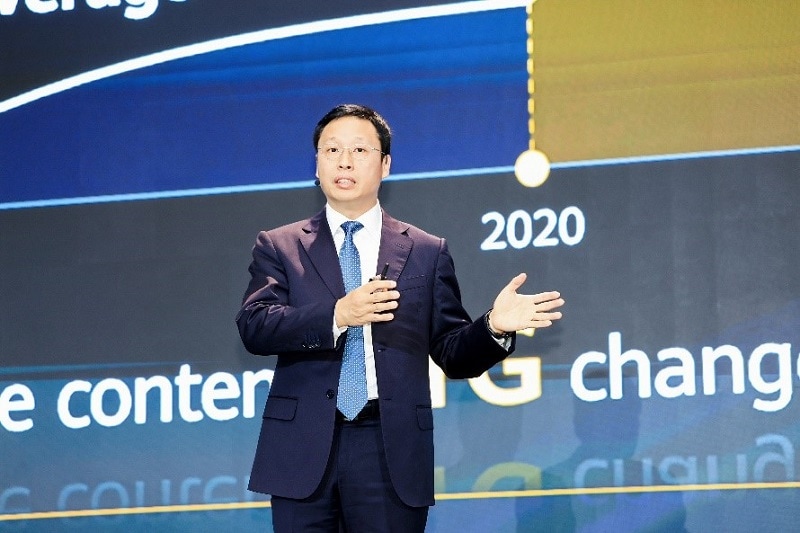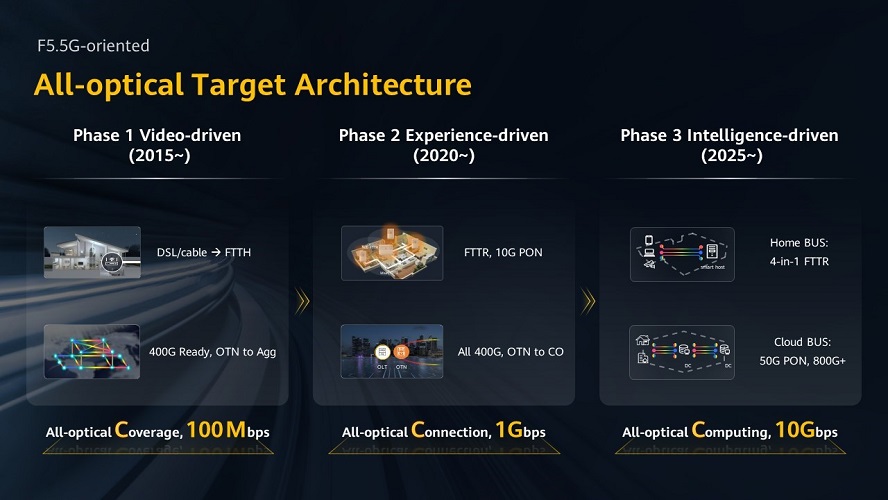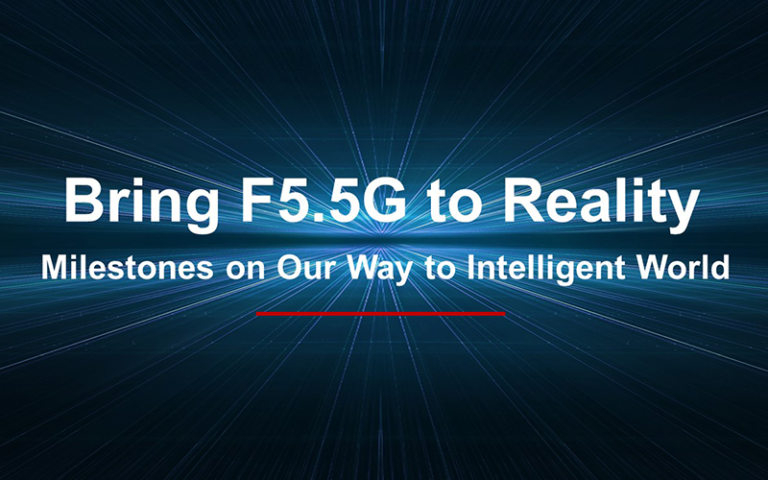[Dubai, UAE, October 13, 2023] During UBBF 2023, Richard Jin, President of Huawei’s Optical Business Product Line, delivered a keynote speech titled “Making F5.5G a reality: Milestones on the road to an intelligent world.” Ta. In his lecture, Richard first proposed the concept of building a three-phase network. Specifically, there are three driving forces behind network development: video (100Mbps network), experience (1Gbps network), and intelligence (10Gbps network). Against this background, Huawei launched an F5.5G-oriented three-phase all-optical target network architecture. This is all-optical 100Mbps home broadband coverage, all-optical connectivity that extends 1Gbps to each room, and all-optical computing that delivers 10Gbps anywhere. All-Optical Target He said that his three-stage construction of the network can meet the network connectivity requirements of hot services at each stage, making F5.5G a reality and moving towards an intelligent world.

Richard Zinn giving keynote speech at UBBF 2023
Phase 1: Video-driven 100Mbps home broadband all-optical coverage
Continuing improvements in video resolution and the rapid adoption of video interaction and immersive XR have led to bandwidth upgrades from 10 Mbps to 100 Mbps to 1000 Mbps. At this stage, HD video and video interaction will be the key drivers to realize the goal of building an all-optical network with 100 Mbps home broadband speeds. Telcos will need to fully migrate towards his FMC and replace copper wires and cables with FTTH all-optical networks. Serialized AirPON accelerates FTTH deployment, supports GPON and 10G PON compatibility, and enables rapid delivery of Gigabit services in hotspot areas. Meanwhile, carriers need to deploy his OTN to the metro aggregation layer and build a 3D mesh 400G-capable backbone network that supports non-blocking bandwidth and zero video delay. Typical innovations from this phase include FlexPON, DQ ODN, and high-performance 400G.
Phase 2: Extend 1Gbps into the room with experience-driven all-optical connectivity
As digital applications become more diverse, fiber extends from the living room to the bedroom to the den to the kitchen, enabling click-and-start applications and providing an immersive network experience. All these developments place higher requirements on network coverage, bandwidth, latency, and roaming. At this stage, users are willing to pay for a more premium home network experience. Therefore, ensuring an end-to-end (E2E) service experience is key to achieving the goal of all-optical connectivity and 1 Gbps to each room extension. To fully offer gigabit services, carriers will need to upgrade their 10G PONs and deploy Fiber-to-the-Room (FTTR), metro 100G OTN to CO, and backbone 400G non-blocking ultra broadband. Typical innovations in this phase are FTTR, metro pooling WDM, and intelligent network management and control systems.
Phase 3: Intelligence-driven all-optical computing delivering 10Gbps everywhere
AI accelerates content production and drives intelligent transformation of industries. To handle the surge in traffic and the migration of large amounts of data to the cloud, you need a compute-centric network that provides bus-level connectivity. Like computer CPUs, buses, and accessories, data center (DC) computing power and storage must exchange information with end users in real time over high-performance networks to achieve the all-fiber goal. there is. 10Gbps compute anywhere.
In this phase, FTTR-based Zenkō home bath Supports IoT device connectivity and playback, integrating 10 Gbps connectivity, sensing, compute, and storage capabilities throughout the home.In addition All-optical cloud bus Implement all-optical one-hop user DC or DC-DC connectivity based on 50G PON and 800G OTN. Typical innovations in this phase include 50G PON, full metro OTN to CO, and backbone 800G. Additionally, OTN must be designed for DC scenarios. In response, Huawei launched Kepler, a next-generation OTN platform that provides over 100T of single subrack switching capacity. By leveraging new materials and construction, Kepler reduces his power consumption per Gbit by 65% and power usage efficiency (PUE) to 1.2. It also provides an intelligent computing unit that comprehensively improves connectivity efficiency.

F5.5G-oriented three-phase all-optical target network architecture
Three-phase all-optical target network ensures parallel evolution and smooth upgrade from F5G to F5.5G. Richard said, “Operators need optimal all-optical target network construction solutions at various stages of development. will change. Let’s work together to make F5 a reality.” .Making 5G a reality and moving towards an intelligent world. ”


